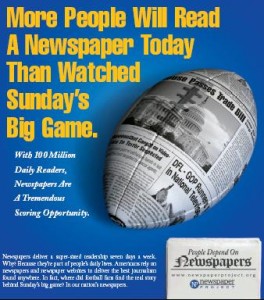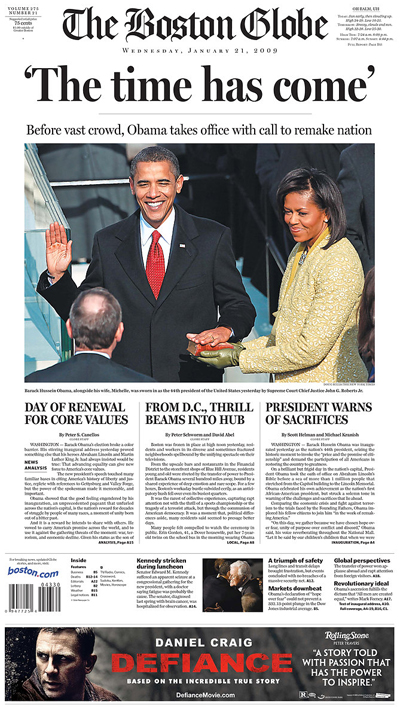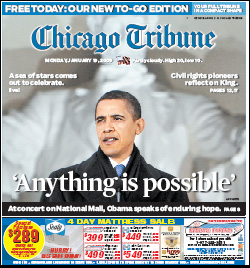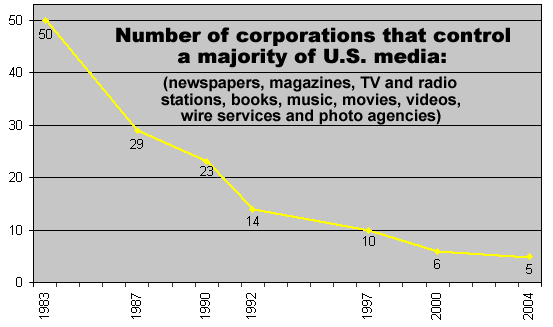 Yesterday was black Thursday in newspaper land as four media companies reported dismal earnings, seven small newspapers shut down and publishers braced the public for more layoffs.
Yesterday was black Thursday in newspaper land as four media companies reported dismal earnings, seven small newspapers shut down and publishers braced the public for more layoffs.
Yet there were some glimmers of hope in the bad news, including signs that deterioration in the advertising business may be slowing and online sales are picking up. We’ll start with the earnings news.
Rupert Murdoch’s $5.5 billion acquisition of Dow Jones & Co. in 2007 drew criticism on Wall Street because of the steep 65% premium the newspaper magnate paid for a flagship title in a declining market. It looks like the critics were right. Citing “the worst global economic crisis since News Corp was formed 50 years ago,” Murdoch’s company posted its largest quarterly loss ever and wrote down $8.4 billion in assets yesterday.
While News Corp. didn’t specify the size of the Dow Jones write-down, analysts speculated that it was responsible for much of the $3.6 billion goodwill charge. The company’s net loss was $6.41 billion, compared with a profit of $832 million a year earlier. Of course, write-downs make such comparisons meaningless. Revenues fell 8% to $7.88 billion. Adjusting for the write-downs, News Corp. still badly missed analyst estimates. Its quarterly operating profit was 12 cents per share, well below the consensus of 19 cents.
Murdoch has often been mentioned as a possible suitor for The New York Times, but in an analysts call yesterday, he dismissed speculation that he’s looking to make acquisitions. Ever the optimist, though, Murdoch found a silver lining in the dense clouds overhanging the media industry. “There has never been a greater appetite for news in the community,” he said. ” I have great faith in the newspapers, and if we continue the way we’re going, we may even get lucky and not have so much competition.”
Coincidentally, The shoe finally dropped at News Corp’s Wall Street Journal, which avoided layoffs in 2008. Twenty-five newsroom positions were eliminated, 11 by attrition and 14 by layoff. The Journal‘s New York-based fashion and retail group will be closed and the Los Angeles and Boston bureaus will each lose a job. The editorial staff numbers about 760 people.
Ugly Numbers, But With a Few Bright Spots
If you’re looking for silver linings, you can find a couple of them in otherwise dismal earnings news from McClatchy Co., Belo Corp. and Scripps Networks Interactive. The companies all reported predictably horrible earnings on Thursday, but there are signs that the revenue free-fall is abating. Belo, which has been slashing and burning payroll recently, actually beat Wall Street estimates by a couple of cents on revenues that fell 9%, in line with estimates. Scripps also beat the street on operating earnings of 55 cents a share, compared to forecasts of 51 cents.
Belo said first-quarter ad sales were about the same as the fourth quarter of 2008, indicating that some stability just possibly has taken hold. However, keep in mind that fourth-quarter sales were down 26% from a year earlier. McClatchy, which reported a $21.7 million quarterly loss, said overall sales continued to decline, but online revenues grew a reasonably healthy 10%. Both Belo and McClatchy made some progress toward paying down their debt, though they still owe over $1 billion and $2 billion, respectively. Scripps actually grew revenue in the quarter, although it slightly missed analyst estimates.
McClatchy is getting ready to swallow more bitter medicine. With classified revenues down 36% and retail advertising off 10% in 2008, the company will cut at least another $100 million in expenses on top of staff reductions that have already trimmed its workforce by a third. Plans include continuing a freeze on executive salaries, eliminating executive bonuses, freezing pension plans and suspensing matching contributions to 401(k) plans. The company didn’t mention layoffs, but you can figure that one out. The Lexington (Ky.) Newspaper Guild doesn’t think McClatchy is going far enough in “declining undeserved bonuses or freezing bloated pay.” It appears to favor a public flogging, too.
Miscellany
The Daily Reporter of the Wichita, Kan. suburb of Derby is shutting down after 47 years. The last issue will be published Feb. 17. The closure puts six people out of work.
The Columbia county (N.Y.) Independent published its last issue today. The twice-weekly paper is owned by beleaguered Journal-Register Co.
The Provo Daily Herald of Utah will stop publishing five weekly newspapers it owns in American Fork, Pleasant Grove, Lehi, Lone Peak and Orem but won’t lay off any employees. Instead, coverage will be folded into a larger Daily Herald, a move intended to “strengthen the company’s core daily product.” The newspaper replaced the lost weeklies with a collection of localized websites that “will present news from all local schools, community groups, churches and local governments, and will feature a social marketplace.”
The Rexburg, Idaho Standard Journal will trim publication from five to three days a week. Starting March 3, the paper will be printed only on Tuesday, Wednesday and Saturday instead of Tuesday through Saturday. No layoffs are planned, since the publisher expects to beef up its online coverage. The move is interesting in light of the fact that most publishers that are cutting production schedules start with the low-margin Tuesday and Saturday editions. The 5,300-circulation Standard Journal is choosing to keep them.
The publisher of the Anchorage Daily News is preparing his staff for more layoffs. In a memo to employees, J. Patrick Doyle said the “unprecedented and deepening financial crisis” will necessitate staffing cuts, but “we will work quickly to notify employees who may be affected. As we have just begun work on these plans now, you may not hear more from us for at least a few weeks.” Which should make for great morale in the newsroom.
For want of $1 million, Hearst Corp. has given up the right of first refusal for the Seattle Times for the next 74 years. In a development that is more confusing than illuminating, Hearst missed a regular $1 million payment that it has made for nearly a decade to Times owner Blethen Corp. in order to ensure that Hearst will get the first chance to buy the paper if Blethen ever puts it up for sale. What’s confusing is that Hearst is already bailing out of the Seattle market by putting the Post-Intelligencer up for sale, so why would it want to buy the Times? The two papers work under a joint operating agreement that shares some expenses and profits (losses) between them. There’s now a debate under way over whether the P-I will continue as an online-only entity and whether the terms of the JOA even permit that. Hearst is reportedly trying to wriggle out of the JOA, which neither company likes very much, anyway. Ironically, the existence of a legal agreement that was intended to keep two newspapers in Seattle may now prevent the P-I from continuing to publish. If you really want to untangle this, read the story.
The Sarasota (Fla.) Herald-Tribune Media Group laid off 48 people and eliminated home delivery to Port Charlotte and Punta Gorda. The newspaper has cut its full-time staff to 350 people, which is 40% lower than its peak at the height of the Florida real estate boom. We were in central Florida last week and saw entire office parks with tumbleweeds rolling through them.
Ellen Mrja has a Nov. 17, 2008 memo from Minneapolis Star Tribune publisher Chris Harte outlining 10 steps the newspaper must take to make it through the industry downturn. The goals are laudable but some are contradictory, in particular “1. We must maintain products that our readers and advertisers will find useful enough to buy” and “2. We must reduce every cost we can.” We’re not sure why this memo hadn’t turned up before before.
The National Labor Relations Board dismissed an appeal of a local board ruling that found that Bay Area News Group didn’t discriminate against employees because of their union organizing activities. The union had claimed that three of 29 employees laid off last June were unfairly targeted because they were trying to unionize the workforce.
















